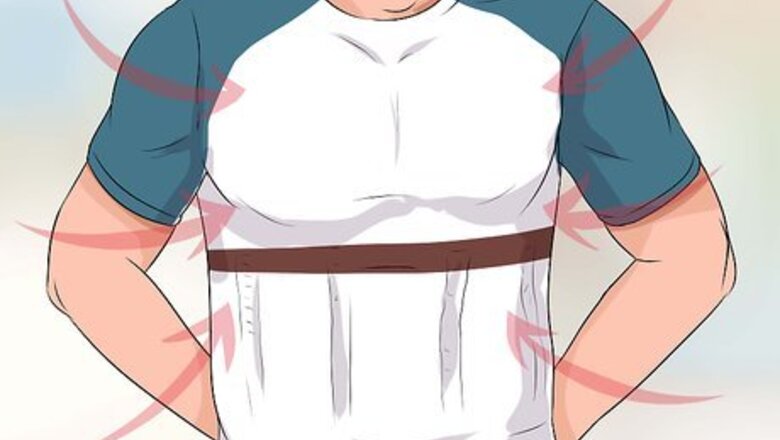
views
Reducing Visibility with Quick Fixes
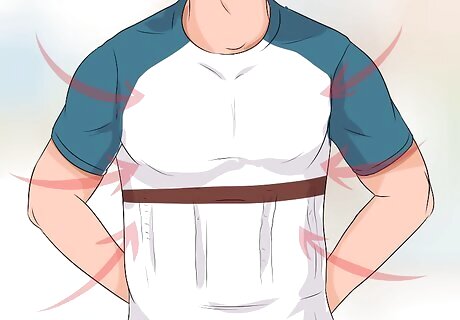
Purchase a compression shirt. This is a shirt that looks like a regular T-shirt but acts as girdle. Some brands include Chest FX, Under Armour, and Power Core. Do a search online for “men’s compression shirt” or “gynecomastia shirt.”
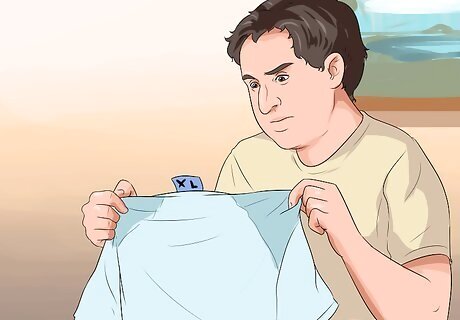
Check your shirt size. You may not have the time or the money to fix your gynecomastia permanently right now. If this is the case, one solution is to hide it a little bit with an overshirt and make it less obvious. If your breasts are too large, this won't work, but in most cases, it's an acceptable short-term answer to the problem. Begin by taking note of your shirt size. You probably already know your T-shirt size, but write it down anyway. Using a tape measure, find the girth of your neck to get a collar size. American collar sizes are displayed in inches on the tags of collared shirts. Write this number down, as it may come in handy at the store. To convert inches to a size classification, follow this rule of thumb: 14-15” (35.6-38.1 cm): Small 15-16” (38.1-40.6 cm): Medium 16-17” (40.6-43.2 cm): Large 17-18” (43.2-45.7 cm): Extra Large 18-19” (45.7-48.3 cm): Extra Extra Large Above 19” (48.3 cm): 3XL, or specialty sizes not commonly available in department stores. Measure your girth (around the stomach) and torso height as well. If either of these numbers are large, you may need to look for a tall-cut (“tall”) or wide-cut (“big”) shirt. These are generally available at specialty “big and tall” stores, as well as many of the larger department stores.
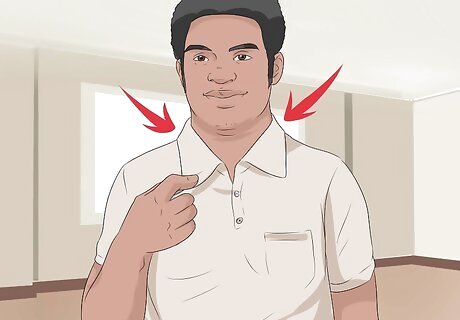
Buy a collared shirt. Choose something that fits you well. It should be reasonably loose in the sleeves, and broad enough to be buttoned easily, though you won't be buttoning it. Avoid “work shirts” (the type that often come in plastic boxes at department stores), as they are not meant to be worn unbuttoned and usually have a tail in the back for tucking into your pants that will look odd hanging free. Avoid anything with an overly flashy screen print or pattern, such as flames, dice, or skulls. (Skulls with flaming dice for eyes, though quite entertaining as a concept, are also right out.) You'll look out of touch unless it's already a well-known part of your personal style, in which case you already own such shirts and don't need to be buying any more anyway. Try different colors and patterns to find what suits you best. Silk and other clingy fabrics won't hide your man boobs as well as stiffer cloth, so choose a shirt made of such material at your own risk. Consider gingham, plaids, block-stripe prints, or Hawaiian shirts – whatever suits your taste and doesn't clash with the rest of your wardrobe.
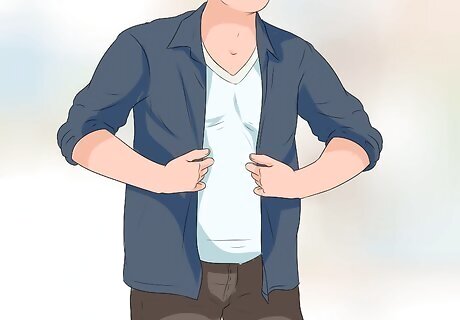
Wear your overshirt. Be sure it is unbuttoned and untucked, and wear it over a T-shirt. The T-shirt can be tucked or untucked, as you prefer. Your overshirt will help hide your gynecomastia with reasonable effectiveness for social functions.
Try binding your breasts with a wrap, if necessary. If the shirt alone isn't enough, consider the time-honored tomboy tradition of breast binding. Though uncomfortable, binding your breasts with tightly-pulled linen bandage cloth or a similar lightweight material is a very effective way to reduce their profile. By combining binding with an overshirt, all but the most severe cases of gynecomastia can be effectively, if temporarily, hidden. Be cautious when binding your chest. Never use ACE bandages or duct tape.
Using Fitness to Get Rid of Man Boobs
See your doctor to determine the cause of your man boobs. In many cases, man boobs are simply caused by a buildup of fat in the chest. Sometimes, however, hormonal changes can cause a man to develop glandular breast tissue (true gynecomastia). In these cases, getting fit and losing weight may not be enough to get rid of your man boobs. Your doctor can help you narrow down the cause(s) of your man boobs and come up with a treatment plan. Gynecomastia can be caused by: Natural hormone changes that occur as you age. Certain types of medications, such as steroids and anti-androgens. Recreational drugs, like alcohol, amphetamines, marijuana, heroin, and methadone. Health conditions that affect your hormones, like hypogonadism, hyperthyroidism, and liver disease. The use of herbal products containing certain plant oils, such as tea tree oil or lavender.
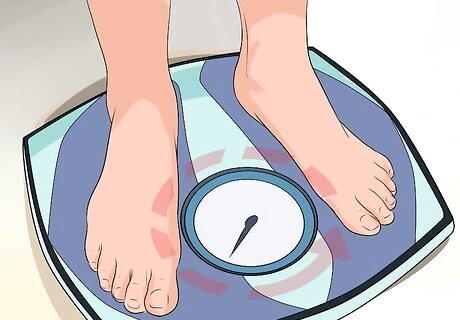
Commit to losing weight. If you are overweight and suffer from man boobs, then your most sensible long-term option is to burn fat and lose weight. Once you start to lean up, you’ll burn off fat overall, including in your chest area. There's no guarantee that this will fix your gynecomastia, especially if it turns out to be a problem with mammary gland tissue rather than fat, but it's a lot cheaper than surgery, and it will certainly help you to feel better about yourself either way.

Make a plan. At the most basic level, weight gain and loss are both controlled by caloric intake. If you burn more calories in a day than you take in through eating and drinking, you will lose weight (and vice versa). This means that any successful weight loss plan must combine a healthy, portion-controlled diet with plenty of exercise. Aerobic exercise, such as running, swimming, and martial arts, burns more calories per hour than most resistance exercise (weightlifting). On the other hand, building your muscle strength through resistance training will cause your body to burn calories faster in general, and especially when engaged in aerobic exercise. It is best to incorporate both types of exercise into your regimen. Forget spot reduction. Bench presses, push ups, and similar exercises, though important, will NOT “spot reduce” chest fat. Remember, fat only burns off when your body needs to burn more calories than you have given it with food and drinks. Just focus on spending more calories than you save, and the rest will take care of itself.
Maintain dietary balance. As you control and reduce the amount of calories you consume, it is easy to lean towards a few food items and neglect balancing your diet. The fact is, the less energy you're taking in through food, the more careful you'll need to be to ensure that the food you do eat is providing balanced nutrition. You can read about recommended intake levels of various nutrients online and go from there. Alternatively, a dietitian can prepare a customized meal plan for you to follow.
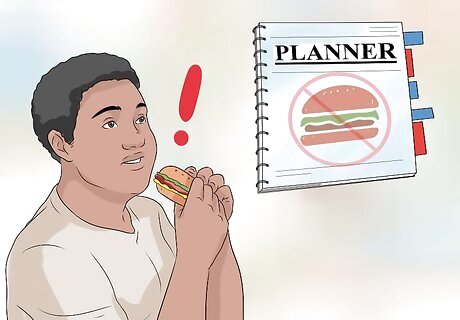
Follow your weight-loss plan. Don't deviate from the routine you've set up for yourself. Bad habits form overnight, but turning a healthy lifestyle into a habit can take months. Be strict with yourself and push through the uncomfortable transition period until your new lifestyle becomes second nature to you. As you become fitter and leaner, your excess fat will slowly melt away, reducing your breast size and increasing your confidence. Be patient. Real fitness takes time. There are no healthy shortcuts. Crash diets only cause your weight to yo-yo. Be sure to avoid the temptation of short-term results, or you might end up in worse shape than when you started. Work with yourself. It's important to be strict about not deviating from your diet and exercise plan, but if you do, don't get depressed and give up. Instead, vow not to do it again and pick up where you left off.
Contemplating Surgery
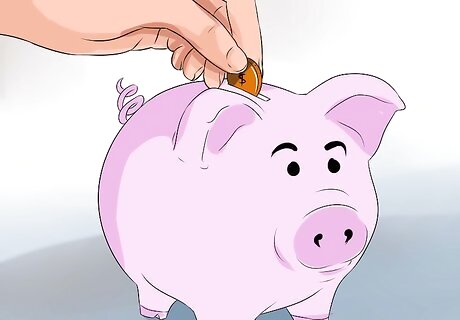
Save money. The absolute most effective and permanent way to eradicate gynecomastia for good is through elective cosmetic surgery (plastic surgery). Surgery to reduce breast size is called reduction mammoplasty in the medical world. A skilled surgeon can open up the breasts, examine them, and remove the offending tissue. Unfortunately, since gynecomastia isn't a life-threatening medical condition, you'll have to pay for it yourself. Assume a cost of at least $5,000. Call your chosen practitioner for a more accurate estimate.
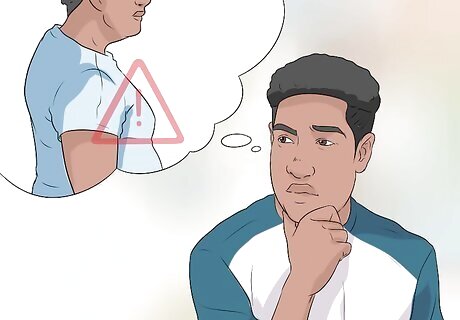
Research the risks. For many men with gynecomastia, surgery is the only way to completely get rid of it. Nonetheless, it is important to understand that male breast reduction surgery, like all surgery, has some inherent risks. Speak with your surgeon ahead of time and be sure you're completely clear about potential complications during and after the surgery. Follow any advice he or she gives you to the letter to minimize your risk.
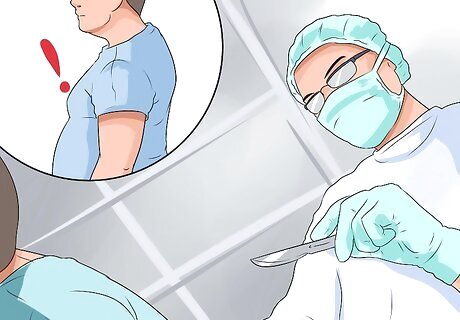
Undergo surgery. The surgery will begin with anesthesia, and then take 1 of 2 directions, depending on the nature of your gynecomastia. Liposuction: If the source of the gynecomastia is primarily fatty deposits, liposuction will be used to remove them and lower the profile of the breasts. Excision: In cases where mammary glands are causing the condition, the excess tissue from them will be carefully excised with a blade.
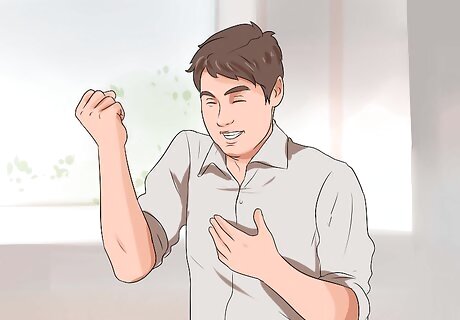
Recover and enjoy. Recovery from reduction mammoplasty typically takes some time, as the incisions need to heal and scar, and any fluids building up underneath them will need to be drained. However, this surgery is not considered particularly invasive, so any hospital stay is likely to be minimal. Your surgeon will give you specific recovery instructions; follow them closely. Be aware that the surgery will leave faintly visible permanent scars, typically on the underside of the breast area.


















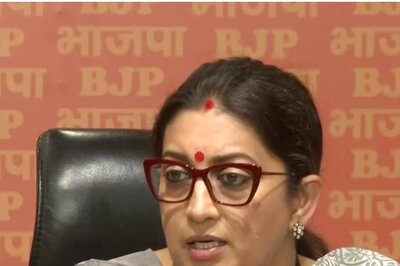

Comments
0 comment